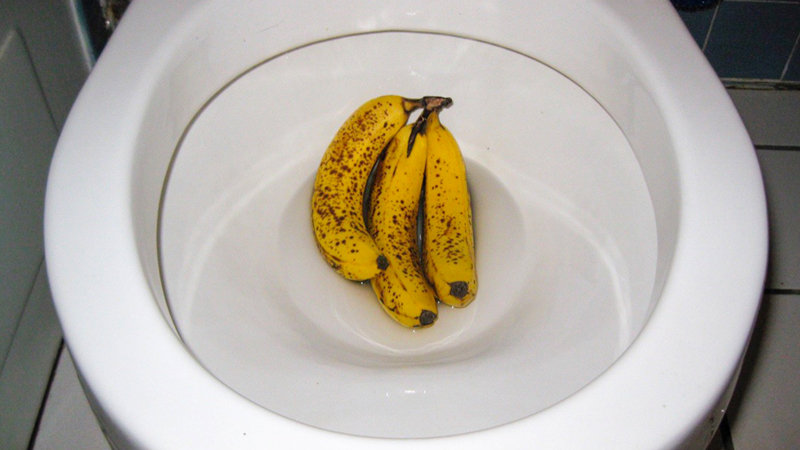Is it Safe to Dispose of Food in the Toilet?
Is it Safe to Dispose of Food in the Toilet?
Blog Article
Everyone will have their own piece of advice when it comes to What Can Happen If You Flush Food Down the Toilet?.

Intro
Many individuals are typically faced with the problem of what to do with food waste, specifically when it pertains to leftovers or scraps. One usual question that occurs is whether it's okay to flush food down the bathroom. In this write-up, we'll delve into the reasons why people may think about purging food, the effects of doing so, and alternate techniques for correct disposal.
Reasons people could think about flushing food
Absence of recognition
Some individuals may not know the possible harm brought on by purging food down the toilet. They might erroneously believe that it's a safe technique.
Convenience
Flushing food down the bathroom may seem like a quick and very easy solution to disposing of unwanted scraps, particularly when there's no close-by trash can available.
Idleness
In some cases, individuals might just select to flush food out of sheer laziness, without thinking about the repercussions of their actions.
Consequences of flushing food down the toilet
Environmental effect
Food waste that ends up in waterways can add to pollution and damage marine communities. Furthermore, the water utilized to flush food can strain water resources.
Pipes problems
Flushing food can lead to clogged pipelines and drains, causing expensive plumbing repair work and aggravations.
Sorts of food that ought to not be purged
Fibrous foods
Foods with fibrous textures such as celery or corn husks can obtain tangled in pipes and trigger blockages.
Starchy foods
Starchy foods like pasta and rice can take in water and swell, causing clogs in pipes.
Oils and fats
Greasy foods like bacon or cooking oils must never ever be flushed down the bathroom as they can strengthen and cause blockages.
Appropriate disposal approaches for food waste
Using a garbage disposal
For homes outfitted with garbage disposals, food scraps can be ground up and purged with the pipes system. Nonetheless, not all foods appropriate for disposal in this manner.
Recycling
Particular food product packaging materials can be recycled, minimizing waste and reducing ecological impact.
Composting
Composting is a green means to deal with food waste. Organic products can be composted and used to improve soil for gardening.
The relevance of appropriate waste management
Minimizing ecological damage
Correct waste monitoring practices, such as composting and recycling, assistance decrease pollution and protect natural resources for future generations.
Safeguarding pipes systems
By avoiding the practice of flushing food down the bathroom, home owners can avoid expensive pipes fixings and keep the integrity of their pipes systems.
Conclusion
In conclusion, while it might be alluring to purge food down the commode for ease, it's important to understand the possible effects of this activity. By embracing proper waste management methods and throwing away food waste properly, individuals can contribute to healthier pipes systems and a cleaner atmosphere for all.
FLUSH FOOD DOWN THE TOILET?
FLUSHING FOOD CAN CAUSE BLOCKED DRAINS IN YOUR HOME
All of the plumbing fixtures in your home are connected to the same sewer pipe outside of your home. This outdoor sewer pipe is responsible for transporting all the wastewater from your home to the Council sewer mains. Even small pieces of food that go down the kitchen sink can cause problems for your sewer. It should therefore be obvious that flushing larger bits of food, such as meat, risks a clog in either the toilet itself or the sewer pipes. Flushing greasy food is even more problematic because oil coagulates when it cools, coating the interior lining of your pipes.
THE TOILET IS NOT A BIN
Food isn’t the only thing that people shouldn’t be flushing down the toilet. People use the toilet to dispose of all kinds of things such as tampons, makeup wipes, dental floss, kitty litter and even underwear. Water goes to great lengths to educate residents about the high costs and stress placed on wastewater treatment systems simply from people flushing the wrong stuff down the toilet. It costs taxpayers millions of dollars each year, and homeowners thousands in blocked drain repairs.
FLUSHING FOOD IS A WASTE OF WATER
Flushing food is a waste of our most precious resource - water. In June this year Level 1 water restrictions were introduced to protect water supply from drought conditions. Much of New South Wales continues to be affected by prolonged drought with recent figures revealing up to 97 per cent of the state remains in drought. Depending on whether you have a single or dual flush toilet, every single flush uses between five and 11 litres of water. In the current climate this is a huge amount of water to be wasting on flushing food that should be placed in the bin (or better yet, the compost).
https://www.jabplumbingsolutions.com.au/blog/can-you-flush-food-down-the-toilet

I hope you liked our topic about . Thank you for taking time to browse our post. Please take the opportunity to distribute this content if you appreciated it. I truly appreciate your readership.
Get An Estimate Report this page